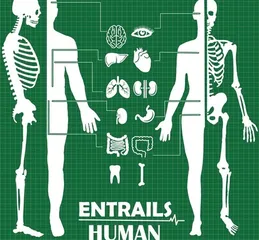Experts say: waistline height ratio is a better indicator of obesity
Research proves that waist circumference and height ratio can better judge obesity
Currently, the body mass index BMI is widely used internationally to measure obesity. The body mass index is equal to the kilogram of weight divided by the square of the meter height.
Margaret Ashwell of the consulting firm, a visiting scholar at Oxford Brookes University in the UK, and colleagues analyzed 31 related studies involving 300,000 participants. It was found that the "waist-to-height ratio" was significantly better in predicting the risk of diabetes, hypertension and cardiovascular disease for men and women of all races than measuring waist circumference and body mass index alone.
A new study completed by the City University of London's Cass Business School found that if a 30-year-old non-smoking man has a waist-to-height ratio of 0.7 or 0.8, his life expectancy will be reduced by 14% or 33.3%.
Ashwell said that controlling waist circumference to less than half of height is the key to avoiding multiple diseases related to obesity. Waist-height ratios are fair to people of all heights. This measurement method applies to different races in various countries.
Ashwell said that although the body mass index is currently widely used in the medical community, it is a criterion for judging abdominal fat and an important reference indicator for the diagnosis of heart disease. But in contrast,"waist-to-height ratio" is more accurate in predicting health risks and should be used as a "universal tool" for doctors to screen for diseases. Moreover, it will help increase everyone's life expectancy.
Four common criteria for judging human figure
1. BMI value
The BMI index (Body Mass Index, abbreviated as BMI) is a number obtained by dividing the number of kilograms of weight by the square of height and meters. It is currently a commonly used measure of human body fat and thinness. A criterion for whether it is healthy. Mainly used for statistical purposes, BMI is a neutral and reliable indicator when we need to compare and analyze the health impact of a person's weight on people of different heights.
Body mass index (BMI)= weight (kg) ÷ height (m)^2
For example: 70kg÷ (1.75×1.75)=22.86
>>> What is BMI?
>>> Test your body mass index (BMI)
2. Waist-to-hip ratio

Waist-to-hip ratio (WHR) is the ratio of waist circumference to hip circumference and is an important indicator for determining central obesity.
The waist circumference is taken at the midpoint of the line connecting the anterior superior iliac ridge and the lower edge of the twelfth rib of the subject. The horizontal position is around the abdomen. The tape ruler should be close to the soft tissue but not compressed. The measurement value is accurate to 0.1 cm. Hip circumference is the horizontal circumference of the body measured through the most bulging part of the buttocks.
There is no final conclusion yet on what the minimum ideal waist-to-hip ratio should be. However, the ideal maximum waist-to-hip ratio has been confirmed by many experts. For women, the ideal waist-to-hip ratio is about 0.67 to 0.80. For men, the ratio is approximately between 0.85 and 0.95.
Paying attention to the waist-to-hip ratio can let you know your health status at any time, and can also establish a warning line for yourself. It is a very effective health indicator. Once the waist-to-hip ratio is too large, it means increased health risks. Diabetes and high blood pressure can easily come to you; for men, it is more likely to develop heart disease.
Generally speaking, fat accumulation in the waist and abdomen is much more harmful to the body than accumulation in the thighs and buttocks. Obesity in the waist and abdomen can easily lead to diseases such as diabetes, hypertension, coronary heart disease, stroke and hyperlipidemia. This is why people often say that "a long belt leads to a short life". Therefore, waist-to-hip ratio is a health indicator, but the body mass index can only be regarded as a rough measure of weight and related health risks.
3. measurements
Standard chest circumference = height X 0.51For example: standard chest circumference for height 160cm = 160cm X 0.51=81.6cm
Standard waist circumference = height X 0.34 For example: standard waist circumference for height 160cm =160cm X 0.34= 54.4 cm
Standard hip circumference = Height X 0.542 For example: Standard hip circumference with height of 160cm =160cm X 0.542= 86.72 cm
4. Standard figure comparison table
